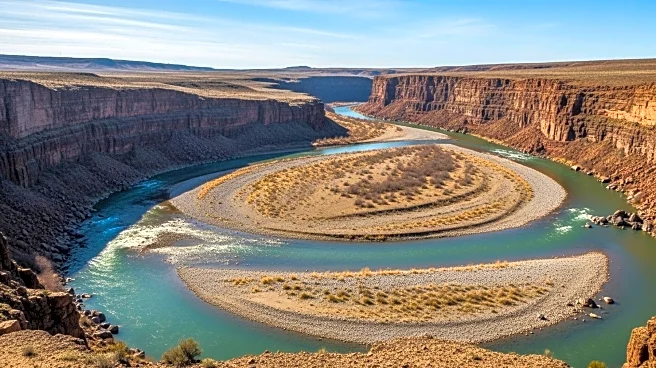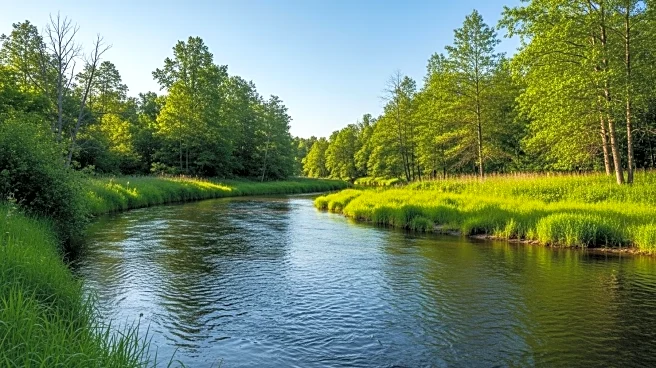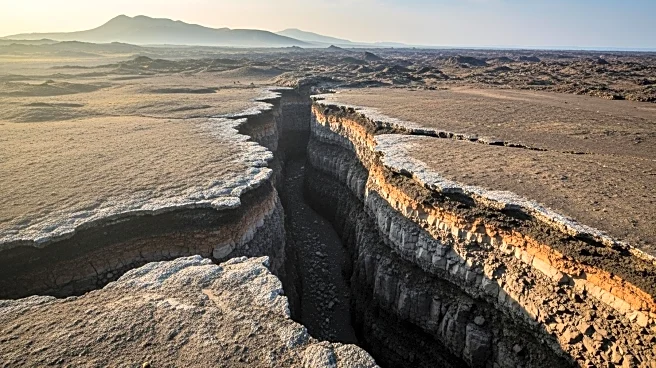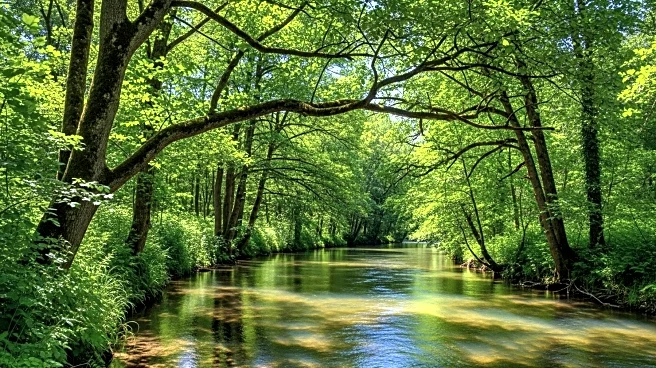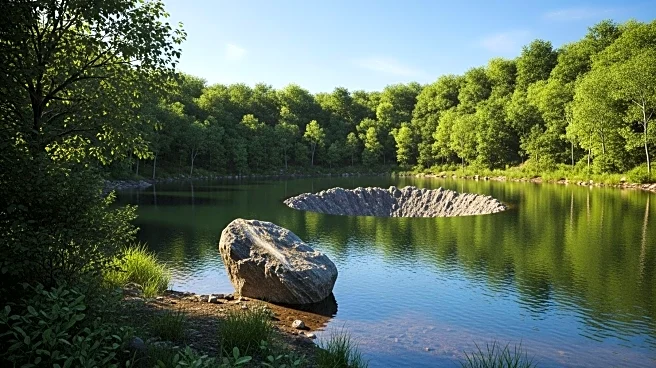What is the story about?
What's Happening?
A recent study from Stanford University challenges the long-held belief that the evolution of land plants was necessary for rivers to form meandering patterns. Traditionally, geologists believed that before vegetation, rivers primarily exhibited braided patterns, transitioning to meandering forms only after plants stabilized riverbanks. The study, published in Science, suggests that unvegetated meandering rivers can leave sedimentary deposits similar to those of braided rivers, indicating that meandering rivers existed before plant life. This finding revises the understanding of Earth's early ecology and climate, as meandering rivers play a crucial role in carbon storage in floodplains. The research involved analyzing satellite imagery of modern rivers, revealing that vegetation influences the direction of sediment migration, which affects river classification.
Why It's Important?
This study has significant implications for understanding Earth's climate history and the role of rivers in carbon cycling. Meandering rivers are vital for carbon storage, impacting atmospheric carbon levels and climate regulation. The revelation that meandering rivers existed before plant life suggests that carbon storage in floodplains was more extensive throughout Earth's history than previously thought. This could lead to revisions in climate models, affecting predictions of natural climate swings and responses to human-induced climate change. Accurate interpretations of the geological record are essential for understanding past climate perturbations and developing strategies to address current climate challenges.
What's Next?
The study prompts a reevaluation of geological curricula and models of Earth's climate history. Researchers may need to reassess the role of rivers in carbon cycling and their impact on climate over geological timescales. This could lead to new approaches in climate science, focusing on the interactions between river types and carbon storage. Further research may explore the implications of these findings for current climate change models and strategies for mitigating its effects.
Beyond the Headlines
The study highlights the importance of accurate geological interpretations in understanding Earth's history and climate dynamics. It challenges established paradigms, encouraging scientists to reconsider the interconnectedness of ecological and geological processes. This could lead to broader discussions on the role of natural systems in climate regulation and the need for interdisciplinary approaches in climate science.
AI Generated Content
Do you find this article useful?
